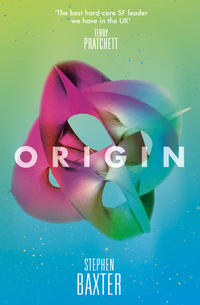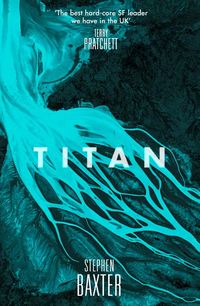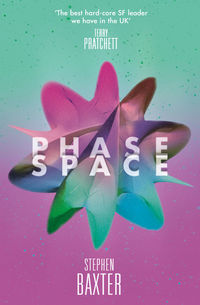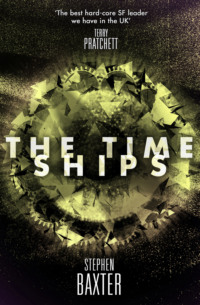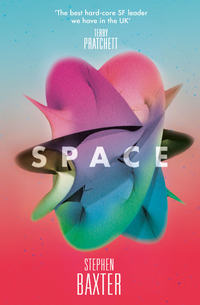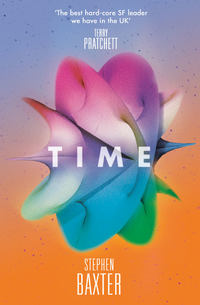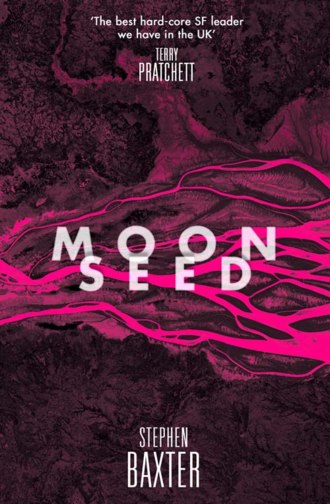
Полная версия
Moonseed
Jane leaned forward and inspected the Moon samples, where they nestled in the slit-open bags. ‘I’m not sure what I was expecting,’ she said. ‘Something – primordial. More glamorous. This looks like –’
‘What?’
‘Like jacket potatoes that got left too long on the barbecue.’
He laughed. ‘The Moon is a dark world, Jane; it only looks bright in the sky for lack of competition.’
She pointed to an empty bag. It was numbered ‘86047’. ‘What happened to that one?’
‘That’s the most important rock in this box. The focus of the study. It’s lunar bedrock. Possibly …’
The work on the Moon rock was actually picking up quickly – although Henry hadn’t had much time for any real science yet, as so much of his time was being taken up with organizational stuff. He had to ensure the lab assigned the right facilities for the preliminary studies he wanted to run – emission spectrometry, X-ray crystallography, mass spectrometry, X-ray fluorescence and neutron activation. He wanted to push for a scanning tunnelling microscope study, but there was no STM here, and Dan McDiarmid made it clear exactly where the boundary of his budget lay, as if every STM in the world had been transported to the Moon itself.
It put Henry in his place, and he spent a lot of time fuming and fighting for turf.
But the work itself had soon gotten going well enough.
Mike Dundas was proving to be a good choice as his lab manager, confirming Henry’s hunch. Mike made sure procedures and operations ran smoothly, and didn’t get in the way of the researchers, including Marge Case, who were waiting to start their studies.
He told Jane, ‘I’m interested in finding fragments of the Moon’s primordial crust, the first that formed after the Moon turned into a molten ball, after it accreted. Global melting: if it happened to the Moon, it must have happened to Earth, and other large bodies like Venus and Mars. But we have to know how it all happened. And the Moon is a natural place to study the process; the evidence is all buried deep on Earth, by the continuing geology of the planet.’
‘And is that what your bedrock fragment is? A piece of primordial crust?’
‘Unfortunately, no. We haven’t found a large crust fragment in any of the Apollo samples. But in bedrock like this we can expect to find fragments in the breccias, recycled repeatedly from earlier ejecta blankets … That is, smashed up and stuck back together again several times.’ He eyed her. ‘Come see what I’m doing.’
He led her to a bench, where he’d set up his petrological microscope. This was just a crude microscope, set up so you could look through a thin rock slice on a rotating stage, illuminated by a light source beneath. Jane squinted, trying to see.
‘Your brother is good at producing slides for this, over in the rock cutting lab,’ he said. ‘You take a thin section of rock – say, five millimetres. You polish it with carborundum, take some thin chips, stick them to glass with optical glue, and then polish them in a grinder until they’re no more than fifty microns thick. Thin enough to see through. The art is the finishing by hand that comes after that; you need better than five microns tolerance, and to get that you have to overcome faults in the jib you use, even in the glass slides themselves …’
She looked dubious. ‘I’m surprised they let you bring that thing in here.’
He looked at the microscope, through her eyes. It was kind of battered, he admitted. He’d picked it up for twenty bucks as an honours student when his department had a clear-out, and it had been old even then. But the mechanism still ran sweet as a nut, and the Swiss optics were as bright and clear as the day they were ground, and the ’scope, worn smooth with use, had been all over the world with him.
Henry expected to be buried with his ’scope.
Still, Mike had banned him from bringing its wooden box in here, which was even more disreputable.
He stepped forward to check the alignment. The view through the eyepiece was a disc of multicolored light, irregular shapes of bright colour. He twisted the analyser disc to show up the colours.
‘Take a look,’ he said. ‘Try to keep both your eyes open. After a while, you won’t see anything through your other eye.’
She bent, and turned the analyser as he showed her.
‘What do you see?’
‘It’s like a view down a kaleidoscope.’ Jane straightened up. ‘Wow. I’m dizzy.’
‘That’s your other eye cutting in. Forget it. The point of the ’scope is that you can see what minerals are present there, just by letting the thin slice filter polarized light.’
‘Just like that? At a glance?’
‘At a glance. Neat, isn’t it?’
‘What am I looking at? Your bedrock?’
‘No. That’s a reference sample. A lunar basalt from another suite, closer to the norm of the Apollo samples. Tell me what you see.’
She bent again. ‘Lots of small shapes, like a tiled floor. And, here and there, like pieces of stained glass window, rough discs and rectangles. Much larger shapes. Ships of glass, sailing among ice floes. As seen when on acid.’
He laughed. ‘What you’re looking at is a felted matrix of small elongate crystals of feldspar – that’s the grey stuff – pyroxene, yellow – and olivine, all the bright colours you can see, scarlet and yellow and pink and blue. And stuck in the matrix you have those bigger crystals, phenocrysts of pyroxene and olivine.
‘Now.’ He took out the slide, replaced it with another. ‘This is 86047. The bedrock. See if you can tell the difference.’
She looked.
‘No olivine.’
‘To a first approximation, yes.’
She straightened up, frowning. ‘So what?’
He lifted his white hat and ran a hand through his hair. ‘So, that’s wrong. I can’t figure out what process has taken out the olivine here.
‘Look – rock is made of silicon and oxygen, and other stuff. The basic structure formed by silicon and oxygen atoms is a tetrahedron. An olivine molecule is built around a single tetrahedron, with iron and magnesium atoms stuck on. So olivine is the most basic form, the mother of all silicates.
‘Deep in the mantle, at high enough temperatures, olivine is all you find.
‘But when a lump of mantle material rises and cools, more complex molecules can form. You put together the tetrahedra like building blocks. First you get pyroxene, which has single chains of tetrahedra, then amphibole, which has double chains, and then mica –’
‘I’ve seen mica. Flaky stuff, thin, papery sheets that you can chip off with a fingernail.’
‘Right. Mica is made up of sheets of the tetrahedra. But then, when the mica cools further, you have quartz. A three-dimensional lattice, a tough, hard crystal. So you are getting more and more complex silica structures, built of tetrahedra.’
‘So what happened here?’
‘I don’t know. It looks as if something has – accelerated the process, in this lump of Moon rock. Reworked the crystalline structure.’
‘Reworked? How?’
‘I’ve no idea. One tack we’re following is trying to replicate lunar mantle processes in the high-pressure labs.’
In these, he told her, you placed a small sample of your rock in a foot-high stainless-steel block called a bomb, and then pressurized it hydraulically, as far as twenty thousand atmospheres, which corresponded to pressures in the Earth’s mantle.
Sometimes the bombs failed, and lived up to their names. So the labs were run remotely, and had steel plates built into their walls, and blast chimneys.
But the high-pressure tests weren’t showing them anything they didn’t know already.
‘In the meantime, we’re ordering up other studies. X-ray fluorescence work, and time on the ion microprobe they have here. That lets us study the composition of very small samples of the rock …’ He scratched his head under his hat. ‘I’ll tell you something else odd. The samples I’ve been taking from the liquefaction patch, on Arthur’s Seat –’
‘I’d like my bottle back sometime.’
‘Yeah. I ran them through the ’scope, and a couple of other tests. They are deficient in olivine as well …’
She frowned.
‘I can’t see any connection either. Spooky coincidence, huh.’
But she was hesitating. As if there was something, some connection, she wasn’t telling him.
He said, ‘You know, if this – whatever – is consuming olivine –’
‘What?’
‘The Earth contains a lot of olivine, in the mantle. No wonder that patch is growing. And it isn’t going to stop eating either.’
‘Eating?’ She laughed, a little nervously. ‘You make it sound alive.’
‘I don’t know what the hell I mean.’
‘Do you think we should tell somebody about this?’ she asked.
‘Like who?’
She shrugged. ‘The police.’
He blinked. That hadn’t occurred to him, that aspect of the situation. The threat. Maybe Geena was right that he had a one-dimensional mind.
‘You know, I don’t like the inexplicable.’
‘Oh, come on,’ she said. ‘Be honest with yourself. I know you people. You have a puzzle, and that makes you happy. Something you have to figure out.’
He straightened up. ‘Buy me lunch and we’ll discuss it.’
She smiled.
‘Listen, you want to see 86047 before you go? The bedrock sample. It’s in the case over there by the wall.’
She shrugged. ‘You’ve seen one Moon rock, you’ve seen them all.’
They made their way to the door, and squeezed into the improvised airlock together.
Behind them, in the central glove box, sample 86047 sat in the lab’s fluorescent light.
It had already been sliced in half and thin samples taken, by Houston technicians and Mike’s careful hands. In the harsh illumination it would have been difficult to tell for sure, but perhaps a careful observer might have noticed something odd about its flat, new surfaces, exposed for the first time since the formation of the rock, billions of years before.
The surfaces were glowing, softly silver.
And, with a rustle rendered inaudible by the layers of glass encasing the rock, a rain of fragments was whispering down from the exposed face.
Jane drove Henry to a multistorey car park close to Waverley Station, and they walked along Princes Street.
You could still make out the deliberate design of the old streets here, Henry thought: a neat rectangular grid pattern, almost like a US city. But whatever character the street had once had was pretty much obscured by the encrustation of plastic and glass of the modern department stores and fast food outlets. There was even a McDonald’s and a Dunkin’ Donuts.
‘This is what we call the New Town,’ Jane said.
‘I know. 1760. You told me.’
‘The Old Town is the medieval town that grew up around Castle Rock. Narrow, windy streets, coming down the glacial tail there …’
‘You’ve been building this city for a thousand years, on top of an extinct volcano. I think you people are seriously crazy.’
‘Well, maybe. In the Old Town they burned witches; in the New Town they bred lawyers and scientists.’
‘Split personality.’
‘Yeah. Jekyll and Hyde.’
‘Right. Didn’t Stevenson come from Edinburgh?’
‘Yes. Maybe we do have a split personality,’ she said. ‘It was in Edinburgh that the crucial moments in the Act of Union were played out. Union with England.’
‘Let me guess. Back in 1672.’
‘Actually, 1707. It was the best for everybody. The alternative would have been civil war, or maybe war with England. What we gained was stability and prosperity. But what we lost was – something you can’t define. Edinburgh used to be a capital. It never would be again. So, I think we’ve all gone slowly crazy.’
‘Conflicts in the programming,’ Henry said. ‘A city called Hal.’
‘Something like that.’
‘You Brits amaze me. The way you’re so hung up on stuff that happened so long ago.’
‘And you guys have no history. History sticks around.’
He glanced around, at Princes Street Gardens, the park which descended in the shadow of Castle Rock. ‘Was this a river bed?’
‘No. But it was a loch. Artificial. Used to dump their sewage in it –’
‘And drown witches.’
‘Actually, yes. They drained it, to make the New Town.’
‘So, lunch …’
It was still early. After a debate they settled on a Seattle’s Best Coffee outlet, which Henry was surprised to find here, and they drank lattes and ate immense chocolate chip cookies.
It was a relief to get in out of the cold.
‘Your work seems to be going better,’ she said.
‘You mean I’m not complaining so much.’
‘How come?’
He couldn’t see any way to escape, so he pulled a package from his jacket pocket, and told her the truth.
It was a courier package from Houston. It contained a tape and a transcript of a conversation with Jays Malone, in which the old guy had evidently done his very best to ransack his memories, and provide Henry with the context he needed.
He tried to explain this to Jane. ‘Geology is about decrypting a tangled story: how a rock was formed, how it got where it was and what happened to it since is as important as what it’s made of. That’s what we call context. And that’s what Jays has given me here.’ He scratched his head. ‘I’m no fan of Man-in-Space. Not when it cuts into good unmanned science missions.’
‘Including your own.’
‘Yes. But the astronauts weren’t bad geologists, on the whole, when they tried. Pilots are trained to be observers, after all, and they all had strong, flexible minds. I suspect they competed with each other to turn in good performances as scientists.’
Jane leafed through the little package, complete with a few sketch maps and diagrams in Jays’s spidery old man’s hand. There was a brief note in there, which Jane now found.
She eyed Henry. ‘So who’s Geena?’
He winced. ‘My ex-wife.’
She nodded, impassive, and handed him the note. ‘So what is this? Is she building a bridge?’
Henry glanced at the note again. Geena was about to go into purdah, working as a capcom on the current Station mission, and beginning the long process of training for her next flight …
‘No,’ he said. ‘Not a bridge. This is Geena waving farewell from the far side of the ravine. Good luck with your life.’
‘Sad,’ Jane said.
‘History.’
‘I think I’m starting to understand you,’ she said, studying him.
He felt uncomfortable under the scrutiny. ‘You are?’
‘You really are a true scientist. You like figuring out how the world works. You like the fact that it works logically at all. You find that comforting.’
He rubbed his cheek. ‘I guess that’s true. Take the Moon. The Moon is very different from the Earth, but the basic principles still apply. Like stratigraphy –’
‘Like what?’
‘On Earth, in general, younger formations lie on top of older formations. Think about the Grand Canyon. A big slice down through millions of years of sedimentary layers, older under younger, older under younger. And it’s the same on the Moon. The big impact that created the Mare Imbrium, for instance, pretty much blanketed the Moon with debris – all of about the same age. So you can tell almost at a glance, anywhere on the Moon, whether a given unit is younger or older than Imbrium. When I learned for the first time that on the Moon, the logic of geology works just the same as in Arizona … well. Isn’t it something?’
‘It is to you anyhow. And you’re talking too much again.’
‘I have the feeling,’ he said slowly, ‘you are diagnosing me as an anal retentive.’
‘I’m not diagnosing. I’m just trying to understand.’
He ran his spoon around the crusted rim of his cup. ‘I guess we don’t have much in common.’
‘I think you’re wrong.’
‘You do?’
‘I seem to be tuned in to patterns in the universe too. Trends and laws. The difference is,’ she said, ‘I don’t take much comfort out of what the patterns tell me about the future.’
They were silent for a while.
She leaned forward. ‘Do you have to go back to work?’
‘Yes.’ He thought about it. ‘No, not necessarily.’
‘Maybe we could skip dinner.’
He looked into her eyes. ‘Oh.’
She said nothing.
He thought it over. ‘Let me pick up the tab.’
‘No. My shout.’
They stood up.
They went back to Henry’s hotel room, in the Balmoral.
It was … memorable.
She was tender, loving, funny. Whereas Geena had always had that chilling air of assessing his athletic prowess the whole time.
But it wasn’t as if they were obvious soul mates. Jane was smart, and logical, but she was obviously coming to quite different conclusions about the world from his own.
Maybe they were complementary, somehow.
He remembered a story, he thought by Plato. How, at the beginning of time, human beings were split in two, by a malevolent god, into halves: male and female. They ran around the Earth thereafter, searching blindly, never happy.
Unless the two halves of a whole, by chance, met up and joined. Once joined, they were complete, and would never part again.
With Jane, it felt like that.
He hardly knew her, he realized. But he felt comfortable in her silence.
Later, lying beside her, he found himself thinking about the liquefaction patch.
He’d been up there, to the Seat, two or three times a week since they first found that puddle. And every time he’d found it had grown.
It was hard to be precise – much of the spread was subsurface – and he was only measuring with shoe leather anyhow. But he was pretty sure the growth was exponential. Doubling every few days.
He recalled Jane’s question about telling somebody.
What the hell was this? And how, indeed, could it be stopped?
Because if it couldn’t –
He started to worry.
He leaned over in bed, and picked up the phone. ‘Can you tell me how to get an outside line?’
He got out of bed, and padded to the cupboard where he’d hung up his jacket. In his wallet he had a card with the number of VDAP, the Volcano Disaster Assistance Program at the US Geological Survey.
He dialled the number, and tapped the card on his teeth. ‘Never leave home without it … Hey.’ He checked his watch. ‘Sorry to disturb you so early. Could you put me through to Blue Ishiguro?’
II
Henry emerged from the lab’s fluorescent harshness into bright afternoon daylight. In his rental car he drove the short distance to Holyrood Park, and, pulling on his rad-proof poncho, walked up the Seat, leaving the traffic noises behind. He drank in the warm, fresh air of this mid-April day. He was coming to like Scotland, he thought; there was something refreshing about the air here, the very light. Something northern.
He had now got into the habit of doing this, walking out to monitor the disfigurement of the Seat, every day.
Today he found the biggest dust pools had been cordoned off by plastic police tape fixed to metal posts. Not far from the site where St Anthony’s Chapel used to stand – now just an anonymous patch in the glass-smooth surface of a dust pit – a young policewoman was standing. She wasn’t like the cops back home. She wore a blue sweater and tie, and the heavy equipment that dangled from her belt was just a radio. No gun. She didn’t look like she needed it.
Henry walked up to her, introduced himself, and told her he was here to study the site. He offered to show her some credentials, but she waved him away.
‘Go ahead, Dr Meacher.’ Her accent was crisp and precise; she was cheery, dapper, competent, very Scottish. ‘I’ve seen you on the TV.’ That was likely; he’d featured, to his chagrin, as a strange-but-true item on the local news, the eccentric Yank here to study the Moon rock. ‘Besides,’ she said, ‘I can see the hammer on your belt. Just don’t fall in.’
‘I won’t.’
‘There are Government scientists coming up to study this. It’s caused quite a stir.’
‘I’ll bet it has.’
She nodded. ‘We’re going to need more cordon tape, aren’t we?’
‘That you are. Take care, officer –’
‘Constable Decker.’
He left her at her post.
He set himself to walk around the perimeter of the primary pool at the summit – as close as he could get, given the police tape – counting his paces as he went.
The pool lay over the craggy agglomerate like a silvery blanket, dimly reflecting the afternoon sun, like a splash of mercury paint. In some places it had actually adjusted the shape of the Seat; bits of the old plug had subsided into the spreading silvery pool, as if dissolved in some powerful acid.
He approached his starting point once more.
There was Constable Decker, standing relaxed, and a little further down the hillside there was the patient group of cultists. Just like every day, they seemed happy; he could hear guitars, folk songs, raucous laughter. A TV crew was making some kind of report, a girl reporter being filmed against the glimmering background of the Seat’s wound. The reporter was in a radiation-proofed smock, but most of the other people here weren’t.
The whole incident was turning into a kind of low-grade circus, he thought, an item for the end of the TV news, a little scary but too strange to take seriously, like skateboarding dogs and skydiving wedding parties and Moonstruck Yank geologists.
Henry had a palm-top computer in his jacket pocket; he pulled it out. He entered the paces he’d counted, made an adjustment for the fact that he hadn’t been able to approach the rim of the pool as closely as before because of the tape, divided by pi on the assumption that the pool was circular … He entered the new data point onto a log-log graph he’d set up in the palm-top. The graph reduced the growth pattern to a straight line.
The new point was close to the line he’d established with his earlier data.
The growth he saw today was just what he’d found before. Steady. Relentless.
‘I was right about the damn police tape,’ he muttered.
He expanded the scale of his graph. He would be able to figure out how far out this shit would reach, given time … It wasn’t reassuring.
This was the easy part, of course. And he had already started to skew the work in the lab, focusing on this accelerating phenomenon, with studies of field samples, literature searches and phone calls to check on comparable cases (there were none). That was easy, too, all under his control, more or less.
The tough part was figuring out what the hell to do about this, how to tell people. From that, he found himself shying away. It wasn’t any part of his career plan to become a prophet of doom.
But if his numbers were right – if the phenomenon wasn’t self-limiting, if this inexorable growth continued – soon he wasn’t going to have a lot of choice.
Afterwards, Henry walked up the glacial tail of Castle Rock, towards the Castle grounds themselves.
The crest of the tail was topped by a chain of streets known collectively as the Royal Mile. The buildings here, the heart of the Old Town, were antiques, and some were imposing, like the uncompromising block of St Giles’ Cathedral; and it was startling to see, peering through steep alleys, a glimpse of the blue waters of the Firth. But to Henry the place was polluted by twee tourist shops selling junk, kilts and bagpipes and whisky marmalade and Scottish ancestry gizmos.
But some of the pubs were good. And he had to admit he had paid his dollar to go see the Camera Obscura, a Victorian sightseeing gimmick that worked better than he had expected.


